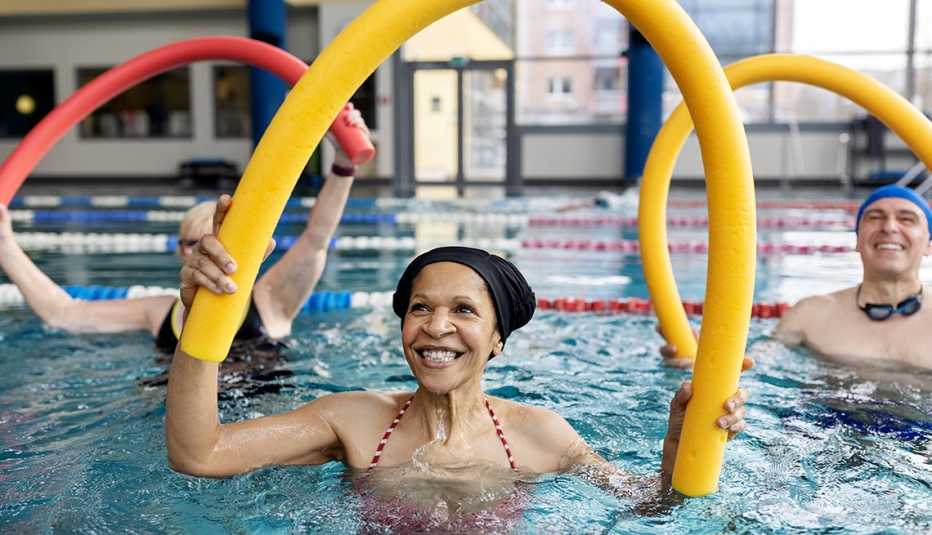Staying Fit


Aquatic exercise is a fun way to work out that doesn’t put pressure on bones, joints or muscles. Water creates natural resistance that supports the weight of the body and reduces impact on joints and muscles. Water exercise and therapy can also reduce intensity of pain, improve range of motion, build strength and generally improve the level of functioning in everyday life.
“Water exercise can be a good alternative for those who can’t tolerate the stress of land-based exercise,” says Cari Utendorf, a physical therapist at the Ohio State Wexner Medical Center. “It allows people to exercise with little chance of injury.”


AARP Membership— $12 for your first year when you sign up for Automatic Renewal
Get instant access to members-only products and hundreds of discounts, a free second membership, and a subscription to AARP the Magazine.
Here are some situations in which it could benefit you and why.
1. You have joint problems
If you have joint pain or stiffness, arthritis, backaches, achy knees or sore hips, aquatic exercise may not cure your symptoms, but it can give you temporary relief. The buoyancy of water lessens stress on your joints. Water slows movement and allows time to focus on posture and alignment, helps reduce inflammation and improves joint range of motion, all of which can reduce pain.
Julie See, director of education at the Aquatic Exercise Association, says that when your body is immersed in water, the weight-bearing load to your joints is reduced. At mid-rib cage to mid-chest depth — the general recommendation for shallow water classes — the reduction is approximately 75 percent. Immersed to the shoulders, it’s reduced to almost 90 percent. At waist depth, weight bearing is reduced to about 50 percent. Simply adjusting the depth at which you exercise greatly influences your workout results.
Michael Murray, president of the APTA Academy of Aquatic Physical Therapy and an aquatics specialist at Duke Health, says water therapy is helpful if you want to try to avoid surgery. It can also help you regain movement and motion after surgery. Because you’re lighter in water and your body can float, you’ll be able to exercise for longer than you can on land without hurting your joints. “After surgery, once a physician gives the go-ahead, aquatic therapy can help improve the range of motion of joints and increase the strength of muscles around those joints,” he says.
2. You have heart disease
The American Heart Association recommends at least 150 minutes (2.5 hours) a week of aerobic or heart-pumping physical activity such as running, walking and swimming to remain healthy. Water aerobics can be used simply to get exercise or as a form of therapy. Murray warns, though, that before starting cardiac aquatic exercise, you need to be sure your vital signs are stable, and your doctor has given you the go-ahead. Water exercise is therapeutic and fun, he says, but it can overload your heart if you have a condition that’s not being properly treated.




































































More on Health
7 Ways Working Out is Great for Mental Health
Exercise boosts mood, reduces depression and eases anxiety
The #1 Exercise to Do as You Get Older
If you only have time for one exercise, fitness experts say, do this one
8 Training Tips for Older Runners
Expert advice for keeping on track